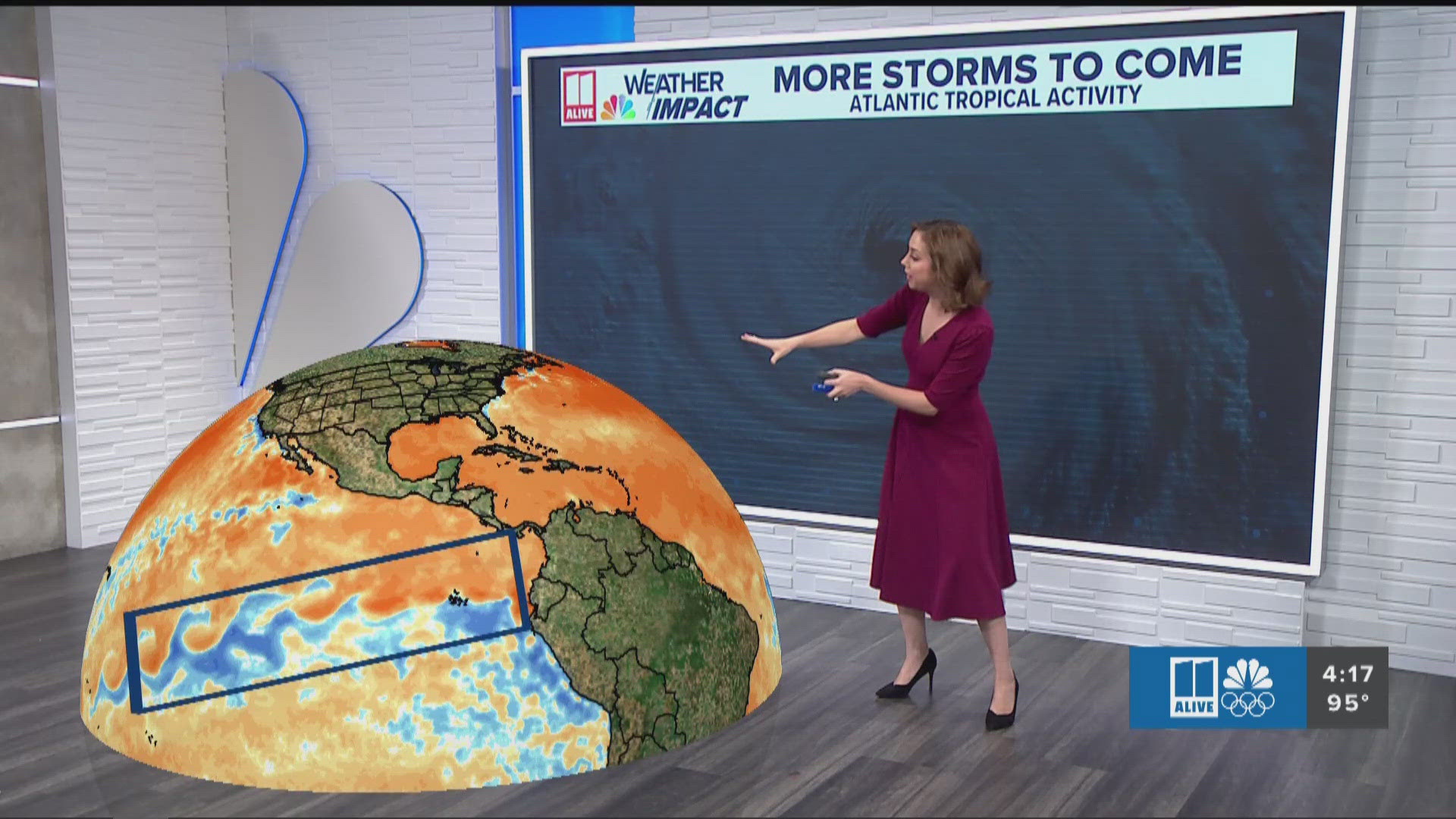ATLANTA — We're more than two months into hurricane season in the Atlantic, but historically speaking, there's a huge amount left to go.
Based on hurricane data since 1950, about 88% of the tropical activity in the Atlantic occurs on or after the first week of August.
NOAA agrees there is much more activity to come. Thursday, the organization released its updated hurricane outlook for the 2024 Atlantic season, stating the "highly active season was likely to continue in the Atlantic"
In the updated outlook, predicted with meteorologists and seasonal forecasters with the Climate Prediction Center, they are now calling for a total of 17 to 24 named storms, with eight to 13 reaching hurricane status, and four to seven of those reaching major hurricane status.
This new outlook is relatively close to the initial outlook they issued in May. The only change is the total number of storms dropping from 17 to 25 down to 17 to 24.


Why did NOAA change its hurricane outlook?
Tropical cyclone formation and development is molded by three key factors: warmth and depth ocean waters; a lack of wind shear and a lack of dry air.
Ocean surface temperatures in the Atlantic, Caribbean and Gulf of Mexico have been warmer-than-normal through this summer, which can fuel storm strengthening.
Although we are in ENSO (El Niño-Southern Oscillation)-neutral conditions, we are still expecting a La Niña to develop for the peak of hurricane season. This would suppress vertical wind shear -- the changing of wind speed with height -- which can disrupt a tropical cyclone's flow and structure, limiting any intensification.
NOAA forecasters also credited weaker tropical Atlantic trade winds and an enhanced west African monsoon as driving factors behind their hyper-active season prediction.
An early start to devastation
Already this season, we've had a total of four named storms. But they have been devastating, impactful storms.
Alberto, the first storm of the season, caused flash flooding in Texas and New Mexico.
Beryl, the first hurricane of the season, made its mark in multiple ways. It became the earliest-ever Category 5 hurricane on record. Unfortunately, that storm was also responsible for 45 fatalities, including 25 people in the United States, according to NOAA.
And just this week, Debby became a hurricane before making landfall in Steinhatchee, Florida. But the story of that storm has been its slow-movement and flooding threat, which spanned from Florida all the way up into the northeast.
Parts of southeast Georgia picked up nearly a foot of rain from Debby. Gov. Brian Kemp extended the State of Emergency through mid-August to make resources available to areas impacted by flooding.

